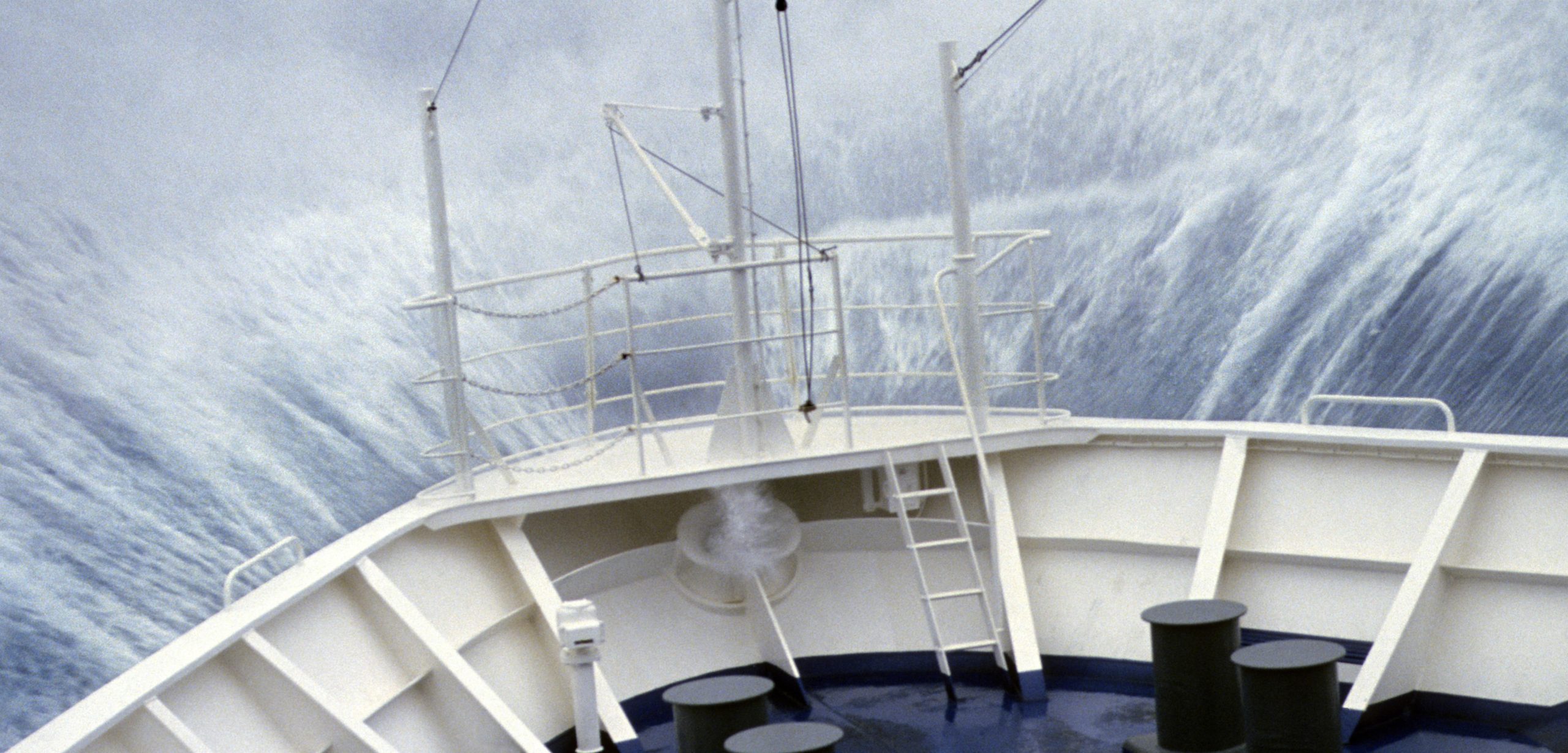Making Monster Waves in the Lab
Rogue waves are rare in nature, but new research is making them perfectly common.
Article body copy
They seem to come from nowhere, walls of water towering above the sea, and then disappear without a trace. Rogue waves can swamp huge ships, lighthouses, or offshore structures without warning, and are among the most terrifying threats facing people at sea.
Rogue waves—waves that are more than twice the height of the surrounding waves—have been blamed for many wrecks. In 1978, the German barge carrier MS München sent a garbled distress signal before suddenly disappearing, leaving behind only a few bits of wreckage. And one theory about the sinking of the SS Edmund Fitzgerald on Lake Superior in 1975 blames rogue waves. Though they have been part of maritime lore for centuries, it was only on New Year’s Day in 1995 that scientists confirmed that rogue waves exist, when they were able to measure one for the first time: a 25-meter-high wave that suddenly hit and damaged the Draupner oil platform off the coast of Norway, at a time when the surrounding waves were just 12 meters.
Because rogue waves are so rare and difficult to record at sea, Amin Chabchoub, who studies hydrodynamics at Aalto University in Finland, has been trying to re-create them in the lab.
![]() Rogue waves are the number one threat to Lego pirates. Photo by Aalto University
Rogue waves are the number one threat to Lego pirates. Photo by Aalto University
In 2011, he showed that a solution of the non-linear Schrödinger equation (iψt = −½ψxx + |ψ|2ψ for those playing along at home), called the Peregrine breather, could explain the formation of rogue waves. The equation describes the evolution of groups of waves, and the solution shows a wave with a progressive and significant increase in amplitude and decrease in duration. But he was only able to produce rogue waves in a wave tank with perfectly regular waves, a condition rarely found in nature.
“The question is now, can these breathers evolve in an irregular sea state?” he says.
When Chabchoub created more realistic conditions in the wave tank and had the tank’s wave-maker move in the way that would produce his rogue wave, he found that it could still persist even in this more complex sea. This improved understanding of how rogue waves behave could help ship designers better prepare vessels to face them, he says.
Qingwei Ma, who studies hydrodynamics at City University in London, England, says the work adds to our fundamental understanding of rogue waves, but he doubts it currently has many practical applications. For one thing, the experiments were carried out in a narrow wave tank, with all the waves moving in the same direction. “It’s still an open question what would happen if the background is three-dimensional spreading waves,” he says.
Chabchoub acknowledges this limitation, and says the next step will be to try and integrate the missing spatial dimension into the model. The ultimate goal is to be able to predict rogue waves at sea before they happen, says Chabchoub. “If we could solve the problem of predicting rogue waves, that would be revolutionary,” he says.

